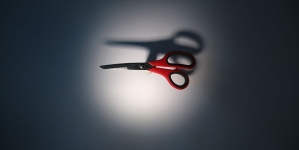-
Tips for becoming a good boxer - November 6, 2020
-
7 expert tips for making your hens night a memorable one - November 6, 2020
-
5 reasons to host your Christmas party on a cruise boat - November 6, 2020
-
What to do when you’re charged with a crime - November 6, 2020
-
Should you get one or multiple dogs? Here’s all you need to know - November 3, 2020
-
A Guide: How to Build Your Very Own Magic Mirror - February 14, 2019
-
Our Top Inspirational Baseball Stars - November 24, 2018
-
Five Tech Tools That Will Help You Turn Your Blog into a Business - November 24, 2018
-
How to Indulge on Vacation without Expanding Your Waist - November 9, 2018
-
5 Strategies for Businesses to Appeal to Today’s Increasingly Mobile-Crazed Customers - November 9, 2018
Have you Heard of the AV 8B Harrier?
Troops in the Marines often refer to this aircraft as a jump jet because of it’s unique qualities and features. The Harrier was first created and used by the British and later by the US Marine Corps because they needed to take advantage of it’s unique capabilities.
Advertisement
The Brits and the Marines needed a craft that could take off and land from very short runways because of the fact that their infantry normally operates from beachheads or on small unimproved islands that may not have improved roads or runways at all. If they are making an incursion into enemy territory the airfields will be occupied by enemy aircraft.
The Harrier is a close support aircraft which means that it is used to assist troops who happen to be in combat on the ground. Ground troops need help quick, fast, and in a hurry when they call.
The beauty of the Harrier is that it is a vertical short take off and landing aircraft VSTOL. It can actually land in a small sized clearing and take off very quickly from there to get into the fight. This also means that they can be easily camouflaged in a jungle setting or any other natural setting.
They can also land and take off from urban environments such as a parking lot or small open area if necessary. They do this by using nozzles which will rotate in order to provide vertical rather than horizontal thrust. This of course uses a lot more gas but the benefits are well worth the extra fuel expenditures.
The preferred method of use is from a short runway but if that is not possible then they can take off vertically. Harriers can also be launched from aircraft carriers. when they are used this way a short ramp is added to help them get up enough speed for a runway type take off.
The Harrier is not a fighter but a ground support aircraft. This means that it is used to help fight the battle on the ground rather to fight other aircraft or to conduct bombing runs behind enemy lines. It therefore does not achieve supersonic speed which would really be detrimental to its ground support mission. Ground support craft are more maneuverable so that they can make tight turns- they don’t have to rely on speed as much to do their job as they have to be accurate against smaller targets on the ground.
The Harrier can be used to fulfill other missions when required. Some of its other uses include combat air patrol, armed reconnaissance, air interdiction, and attacks on enemy ground air defense weapons.
The Marine Corps has recently added the Osprey to its inventory of available air support craft. the Osprey is actually a helicopter which uses principles of propulsion similar to that of the Harrier. It uses propellers rather than a jet engine and can fly using the wings as rotors as a helicopter or as propellers like an aircraft.
The Osprey typically takes off vertically then rotates it’s propellers as it begins to move forward to fly like an airplane. It is used to ferry troops and equipment/supplies rapidly across the battlefield. It gives the Marines the ability to move ground troops very quickly into and out of hot spots on the battlefield and to react to rapidly changing battlefield developments. It can also be used to move wounded troops quickly out of harm’s way.
Advertisement




























